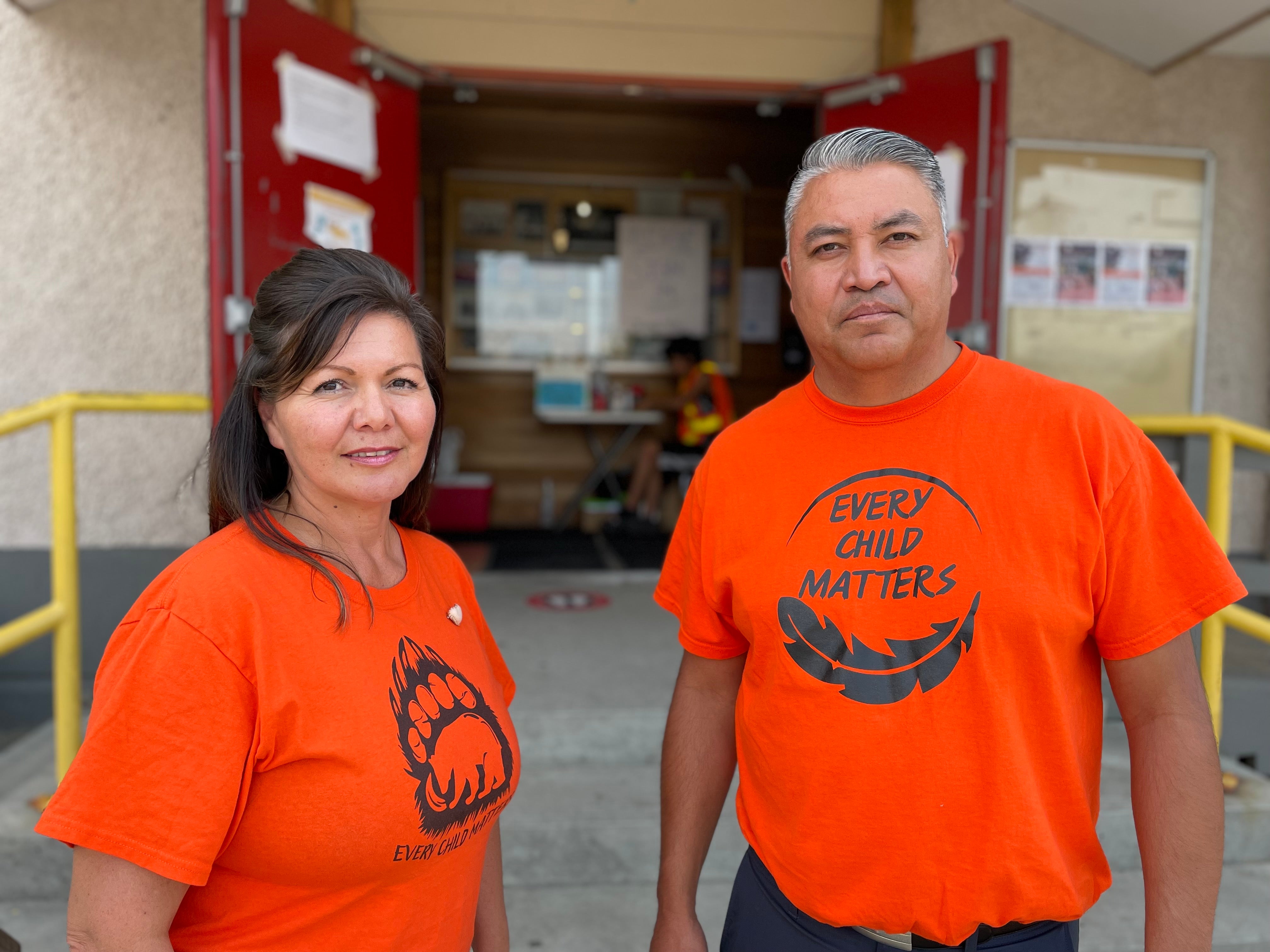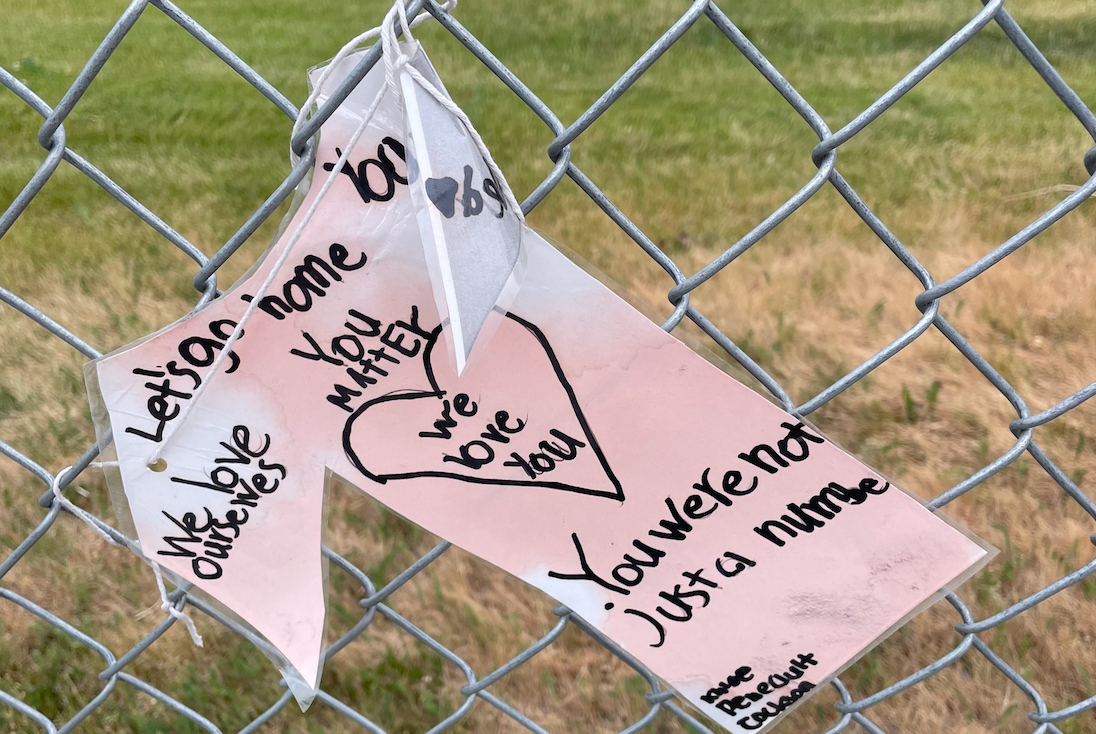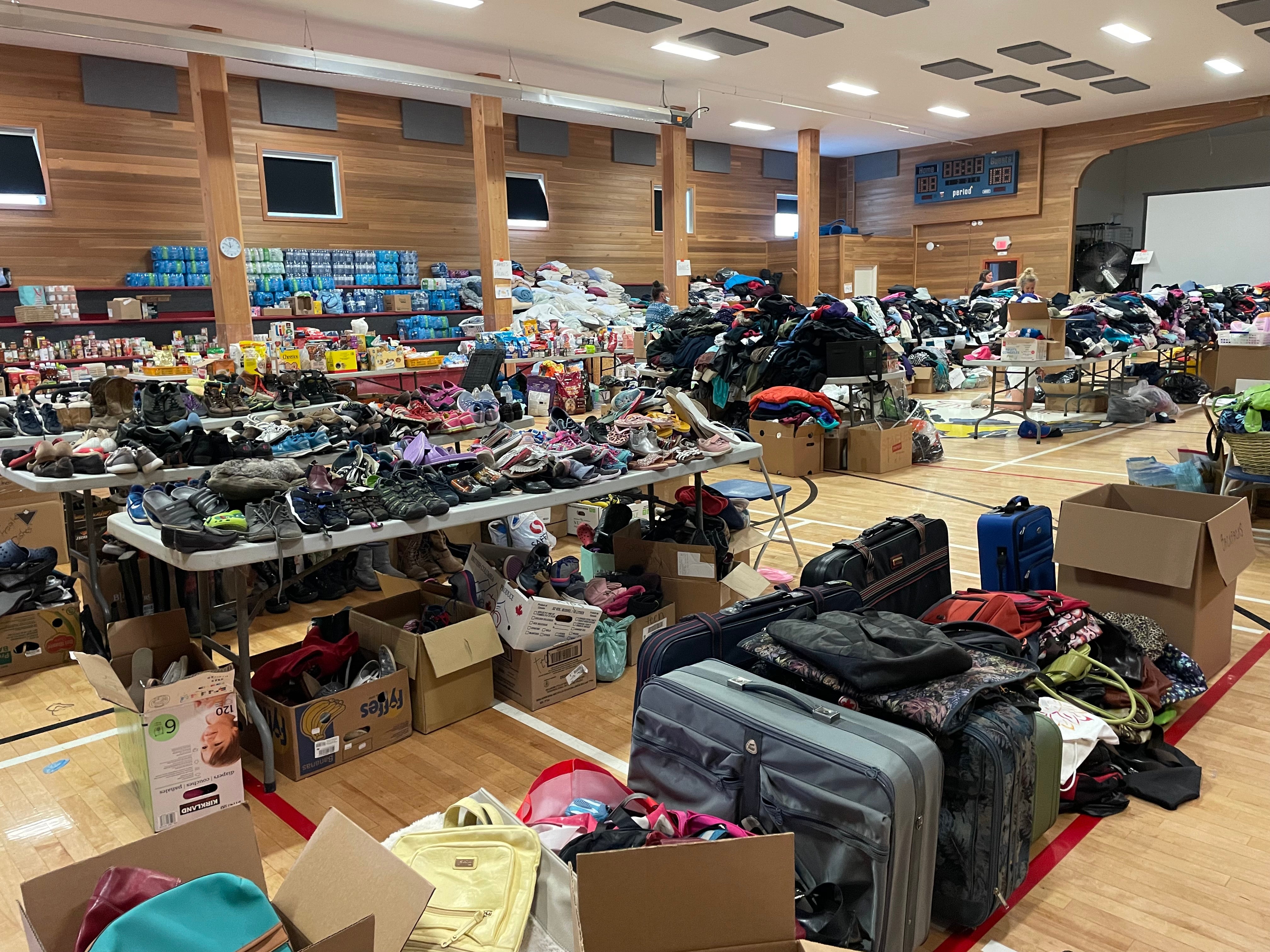Canada wildfires: Indigenous community still reeling from child graves discovery welcomes evacuated neighbours
‘People are coming from everywhere, whether they’re from a reserve or another community, they just show up’

Your support helps us to tell the story
From reproductive rights to climate change to Big Tech, The Independent is on the ground when the story is developing. Whether it's investigating the financials of Elon Musk's pro-Trump PAC or producing our latest documentary, 'The A Word', which shines a light on the American women fighting for reproductive rights, we know how important it is to parse out the facts from the messaging.
At such a critical moment in US history, we need reporters on the ground. Your donation allows us to keep sending journalists to speak to both sides of the story.
The Independent is trusted by Americans across the entire political spectrum. And unlike many other quality news outlets, we choose not to lock Americans out of our reporting and analysis with paywalls. We believe quality journalism should be available to everyone, paid for by those who can afford it.
Your support makes all the difference.The trauma is still fresh for the Tk’emlúps te Secwe̓pemc First Nations community, just weeks after the discovery of 215 unmarked children’s graves on their reserve, but that hasn’t stopped them from helping other communities in need.
Tk’emlúps, the First Nations government of Kamloops, in Canada’s British Columbia, is offering assistance to fire evacuees from Lytton and the surrounding areas, as wildfires force evacuations across the province.
It comes as the community remains in the midst of an investigation into the discovery of the remains of 215 children, who were students at the Kamloops Indian residential school, in late May. The school was in existence from 1890 to 1978, and was the largest in the Indian Affairs residential school system, which is believed to have been behind the deaths of thousands of children.
Visible reminders of the grim discovery remain as the community temporarily shifts its focus to a more immediate crisis.
Small wooden crosses, adorned with children’s clothes, line the highway that leads to the reserve.
At the Moccasin Square Gardens community centre, which is situated beside the Kamloops Indian residential school site and is now a fire donations centre, paper messages from local children are tied to a fence. They bear messages such as, “You are not just a number,” and, “We love you.”

The donations centre was set up on the reserve after the village of Lytton was all but destroyed by a fire on Wednesday, just days after it became the site of Canada’s highest ever recorded temperature, for three days in a row, reaching 121.1F (49.5C).
Speaking to The Independent on Monday, Tk’emlups chief Rosanne Casimir says their community was “resilient” and was always open to helping people in need, regardless of the circumstances.
“As First Nations people, anytime anything catastrophic happens, our doors have always been open and we’ve always been there to support each other,” she says.
Donations are still streaming in at the centre, which is bursting at the seams with food, clothes and other resources for fire evacuees. Three buildings at the reserve are now full of stock, with tables and floorspace piled high in each. They’re currently seeking off-site storage.
As well as providing goods, Casimir says 40 beds have been set up in the school site to take in people without a place to stay, while they also have tents and mattresses for those wanting to sleep off-site. Volunteers are showing up unannounced to help.
“People are coming from everywhere – whether they’re from a reserve or another community, they just show up. They’re either providing physical hands-on help or just picking up a drum and singing some songs to bring some relief,” she says.
“We do have a lot of different areas of land that have opened up and they have also reached out to the band as well to say we can take animals and livestock.”
While the centre is now discouraging physical donations, Casimir says people are welcome to bring gift cards for fuel, food or phone credit, so people can get exactly what they need.
“But anyone who does show up with donations, we’re not turning them away. Because everyone is still wanting to come and do their part, and it’s about gratitude.”
Casimir is expected to release a report imminently on the discovery of the remains on the residential school site. However, while they are still “working and progressing on that”, she says they have been able to spread their resources to be able to help out with the fire response as well. A team from the Tk’emlups natural resources department was out in the area fighting the fires as we spoke.

Authorities warned on Monday that “severe” thunderstorms in the afternoon could worsen the fire situation, as lightning strikes could spark more fires.
Casimir says she is concerned about the mental health of her community after the spate of recent hardships.
“With Covid, heatwaves and the trauma of those old wounds opening with the residential school, all of that brings mental health issues. And now you’ve got smoke, which is going to be really hard for people with health issues. And then knowing that potentially the fire risks, not just in the mountains but in the reserves, could be impacted.”
Terry Teegee, the regional chief of the British Columbia Assembly of First Nations, who spoke out at the time of the residential school discovery, calling it “a dreadful time of forced assimilation and genocide inflicted by the colonial Canadian state”, said 85 per cent of British Columbia’s 204 First Nations communities were in rural areas. His current focus was on ensuring communication channels were open.
“We’re really trying to make sense of what is going on. We’re communicating with chief and council, and also First Nations emergency services. We need to get coordinated and figure out some of these very, very tough logistical things, especially communications and who we should be talking to,” he said.
Botanie Valley resident Andy Boss, his wife and three children, were at the community centre on Monday gathering supplies.
The family had been in Kamloops since Friday after fleeing the fire. They don’t yet know if their home, which is about 20km from Lytton, survived the flames.
When the fire tore through the area on Wednesday afternoon, the family were driving into town to get dinner.
“We went around the corner and saw plumes of smoke, and then we went two feet more, straight into a wall of fire,” Boss said.
He explained they had enough time to rush home and gather some belongings, and could hear the “roar of the fire”.
“It sounded like a jet and it was still 10 kilometres away.”
Along with about 30 other families from the valley, Boss, his family and three dogs drove in a convoy out of the area through the only route available, an “old logging road”. Their truck now has deep scratches along its length, from the trees and scrub along the overgrown route.
“A policeman stopped us as we were heading along the road. I said to him, ‘Is Lytton burning?’ and he said yes,” Boss said. “People ran for their lives. From the start of the fire to finish, it was about half an hour.”
The family spent the night in their truck in the nearby town of Lillooett, but left early the next morning because of the thick smoke, to take up an offer from relatives to sleep in their trailer.
Speaking from experience, Boss said he expected to be in Kamloops “for a while”. The family were also evacuated as a result of a wildfire in the area six years ago.
The loss of Lytton was particularly hard for Boss, who has lived in the town for 30 years as a contractor and had built many of its structures – including the Lytton Chinese History Museum.
When asked why he stayed in an area with such a high risk of fire, he was resolute in his answer.
“Easy – we love it. I know pretty much everyone who lives there. But that’s our home.”


Join our commenting forum
Join thought-provoking conversations, follow other Independent readers and see their replies
Comments